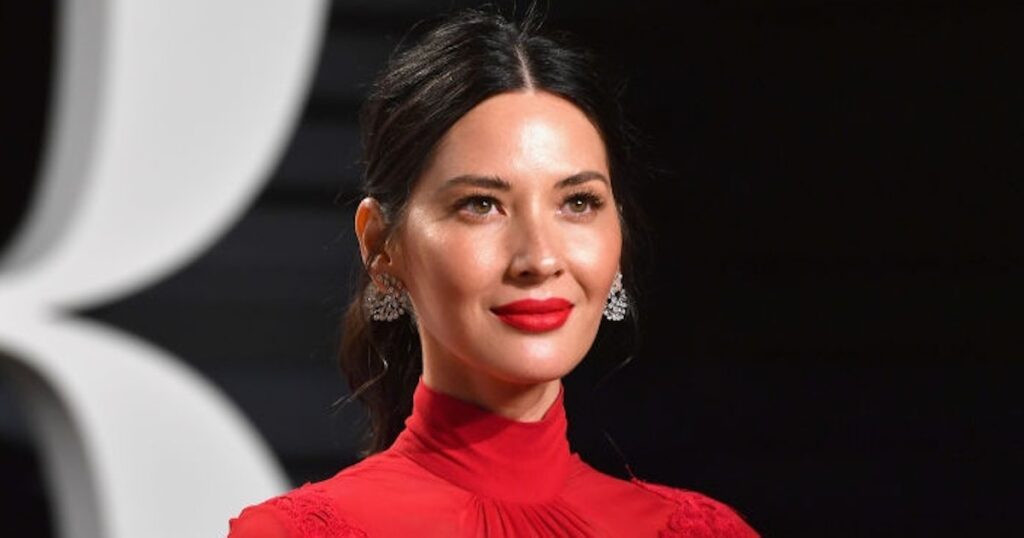How To Take The Breast Cancer Risk Assessment Olivia Munn Says Saved Her Life

In a candid Instagram post, Olivia Munn shared that she’d been diagnosed with “an aggressive and fast-moving” form of breast cancer last year. Her diagnosis came just two months after undergoing genetic testing that cleared her for 90 different potentially cancer-causing mutations, including both BRCA genes, which she noted are “the most well-known breast cancer gene(s).”
Munn explained that she wouldn’t have found the cancerous cells until her next mammogram, which wasn’t scheduled for another year, crediting her physician, Dr. Thaïs Aliabadi, with deciding to calculate her breast cancer risk score. This assessment showed she was at elevated risk for breast cancer, so her doctor ordered additional testing — an MRI, an ultrasound, and a biopsy — with the biopsy confirming she had Luminal B breast cancer in both breasts.
In the months since, the 43-year-old has undergone four surgeries, including a double mastectomy, and wanted to share her story in the hopes of making others aware of their potential risk factors. “I’m lucky,” she wrote. “We caught it with enough time that I had options. I want the same for any woman who might have to face this one day.”
So, you might also be wondering how you can determine your own risk factors, even if you don’t have known instances of breast cancer in your family. For starters, it’s worth noting that there are two free and easily accessible breast cancer risk assessment tools online — one of which Munn’s doctor used — that can help start the conversation with your own provider, as Dr. Ruth Oratz, breast medical oncologist, NYU Langone Health’s Perlmutter Cancer Center and clinical professor of medicine, NYU Grossman School of Medicine, tells Scary Mommy.
Patients 35 and up can use the Gail Model, while any adult can use the Tyrer-Cuzick Risk Assessment Calculator, which asks more detailed questions about your family’s health history.
These tools are “statistical models that allow healthcare professionals to calculate the probability of a woman developing breast cancer over the course of her lifetime,” explains Oratz. “It provides the probability or chance of breast cancer within the next five years as well as up to age 90.” The model “takes into consideration the woman’s age and family history — whether any first or second-degree relatives have had breast cancer, whether or not she has had a prior breast biopsy and also information about reproductive history including age of first menstrual period and pregnancy.”
Since these assessments are freely available online (and can be done in a matter of minutes), any patient can complete one or both. Dr. Eleonora Teplinsky, head of breast and gynecologic medical oncology at Valley Health, recommends that all patients use the test as a jumping-off point for conversations with their PCP or OB-GYN between the ages of 25 and 30.
Your doctor can then “do a more detailed evaluation as to your breast cancer risk,” adds Oratz. “For example, if there is a family history of breast cancer, then the patient may be referred for genetic testing,” which can assess the risk for dozens of cancers, as Munn did prior to her diagnosis. (ICYDK, all genders can develop breast cancer, but it’s BIPOC women who are most often dismissed by doctors or misdiagnosed, leading to higher mortality rates.)
There are some instances in which these assessments are “not really accurate,” as Oratz notes. If a patient has specific genetic mutations (like the BRCA genes) or has previously been diagnosed with breast cancer, more specific testing to determine future risk is required. The Gail Model also notes that it “may underestimate risk in Black women with previous biopsies and Hispanic women born outside the United States,” as well as potentially skewed results in American Indian/Alaska Native women due to “limited data.” (Another maddening reminder that women of color are rarely given the same time and care as their white counterparts in the U.S. healthcare system.)
Though these tools are free and easy to complete, it’s also worth pointing out that additional testing and appointments can be cost-prohibitive to many women, even with insurance. If your doctor determines you are at increased risk, preventative care — which could include more routine screening measures, medications, and/or surgery — can also be expensive and difficult to access.
In her post, Munn thanked the team of doctors who have helped her every step of the way, but the stark reality is that not every cancer patient has access to the world-class medical care they deserve.
Still, Oratz notes that “having information empowers patients,” adding, “It is very important for people to be aware of their health risks, their family history, and their own personal medical conditions,” all of which could affect one’s chances of developing cancer.
We’re wishing Munn well as she continues to recover and heal. Hopefully, her post will help empower others to start a dialogue with their own providers, even if they think they’re too young or too healthy to develop breast cancer. It’s never the wrong time to take charge of your health, whatever it looks like for you.





